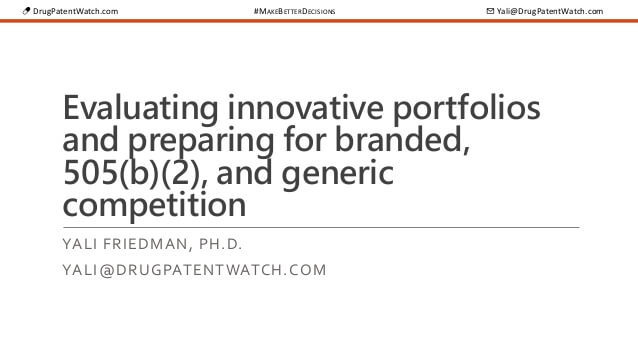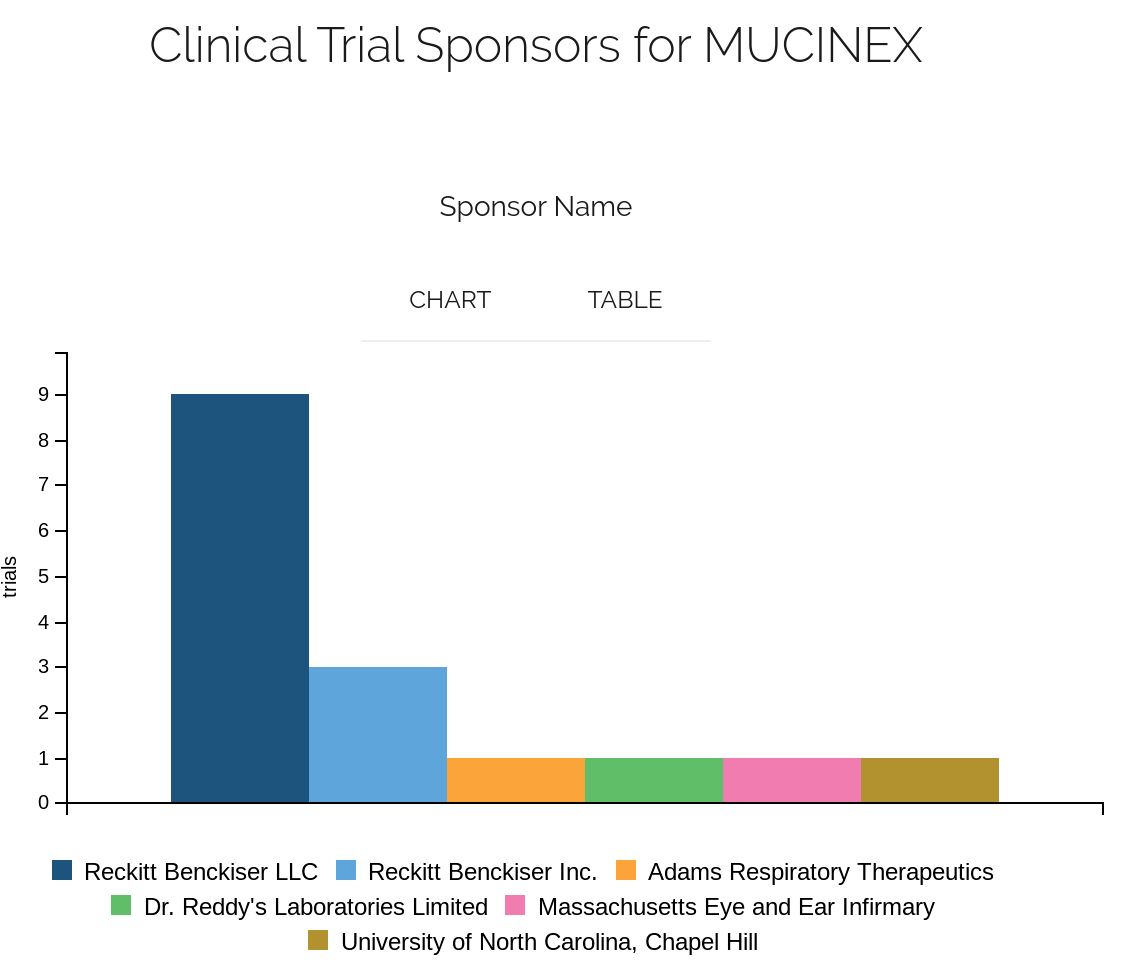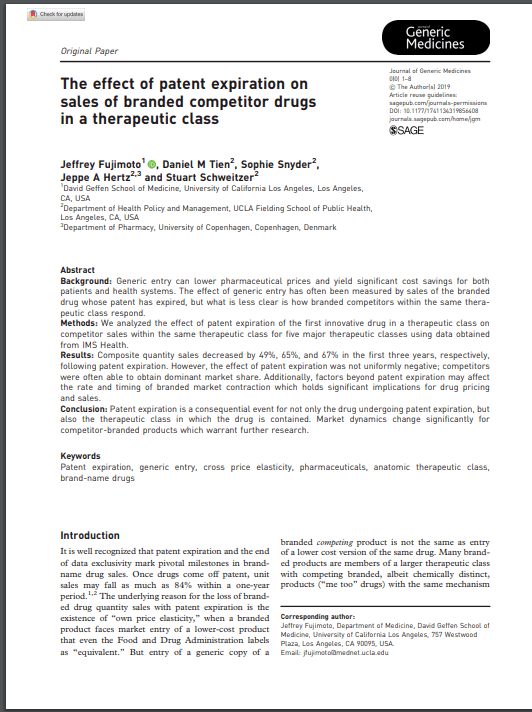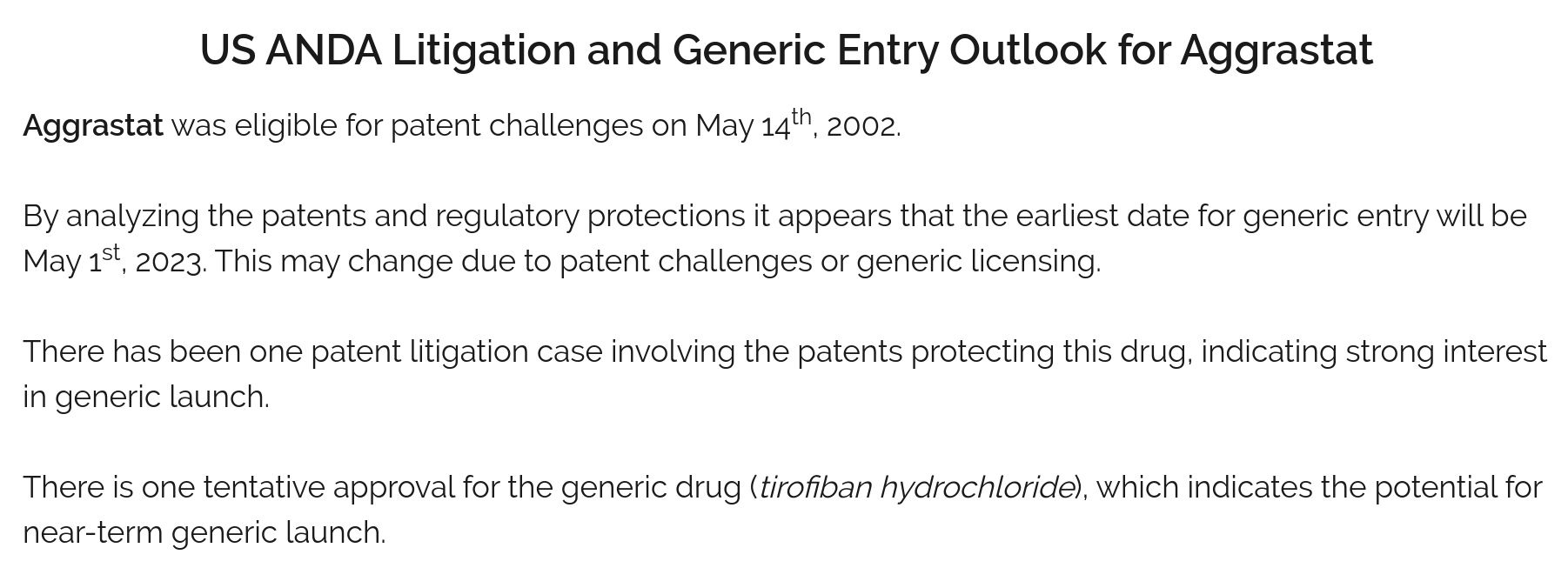The landscape of pharmaceutical patent litigation has undergone significant transformation in recent years, with Abbreviated New Drug Application (ANDA) filings showing a notable decline of approximately 36% from 2017 to 2021. Despite this trend, pre-ANDA litigation strategy remains critical for both innovator and generic pharmaceutical companies. A robust pre-ANDA strategy encompasses comprehensive patent portfolio development, strategic regulatory planning, and meticulous litigation preparation. For innovator companies, patents serve as vital protection mechanisms to recoup substantial investment in drug development, while generic manufacturers must navigate this complex intellectual property terrain to secure market entry. This report examines the multifaceted approaches to developing effective drug products and patent portfolios in preparation for potential ANDA litigation, highlighting the importance of strategic patent management, expert witness selection, and market-focused planning for pharmaceutical stakeholders.
Understanding the ANDA Litigation Framework
The Regulatory Foundation
The pharmaceutical industry operates within a complex regulatory environment that balances innovation incentives with public access to affordable medications. At the heart of this balance is the Hatch-Waxman Act, which established the Abbreviated New Drug Application (ANDA) pathway for generic drug approval. This framework allows generic manufacturers to rely on previously established safety and efficacy data from the innovator’s New Drug Application (NDA)1. The ANDA process fundamentally requires generic companies to demonstrate bioequivalence to the reference listed drug rather than conducting full clinical trials, significantly reducing the time and cost of bringing generic alternatives to market.
For pharmaceutical companies navigating this landscape, understanding the regulatory nuances is essential for strategic planning. The ANDA framework creates a structured pathway for patent challenges, allowing generic manufacturers to assert that the innovator’s patents are invalid, unenforceable, or will not be infringed by the proposed generic product. This certification process (known as Paragraph IV certification) automatically triggers potential litigation, as the innovator has 45 days to initiate an infringement lawsuit after receiving notice of the certification1. This regulatory mechanism effectively transforms scientific and technical patent issues into legal battles that determine market exclusivity and billions in potential revenue.
The pre-ANDA phase represents a critical planning period for both innovator and generic companies. During this time, innovators must build robust patent protection while generic companies conduct thorough due diligence to identify potential entry opportunities. The strategic decisions made during this phase often determine the outcome of subsequent litigation and ultimately market positioning.
The Economic Stakes of Patent Exclusivity
The financial implications of patent exclusivity in the pharmaceutical sector cannot be overstated. For innovator companies, patents are not merely legal instruments but essential business assets that protect massive research and development investments. A well-managed patent portfolio provides market exclusivity that allows pharmaceutical companies to recoup development costs, which often exceed billions of dollars per successful drug12.
This exclusivity period represents a limited window of opportunity for innovator companies to generate profits before facing generic competition. When generic versions enter the market, the innovator typically experiences a rapid decline in both price and market share, sometimes losing up to 80-90% of sales within the first year of generic entry. This stark economic reality underscores why pharmaceutical companies invest so heavily in developing comprehensive patent strategies and vigorously defend their intellectual property rights.
From the generic perspective, successful ANDA litigation can provide early market entry opportunities worth hundreds of millions or even billions of dollars. Being the first generic to market comes with significant advantages, including potential 180-day exclusivity periods that substantially enhance profit margins before additional generic competition emerges. This economic incentive drives generic companies to carefully analyze patent portfolios, identify potential weaknesses, and develop strategies to navigate or challenge patent protection.
The Evolution of ANDA Litigation Trends
Recent data indicates a pronounced shift in ANDA litigation patterns. According to Patexia’s ANDA Litigation Intelligence Report, case filings have decreased by approximately 36% from 2017 to 2021, with the sharpest decline occurring between 2020 and 2021 at a rate of 5.3 fewer cases per month4. This declining trend extends beyond case numbers to include the total number of patents involved in these disputes.
The reasons for this decline are multifaceted and may reflect changes in patent strategy, pharmaceutical development approaches, and market dynamics. Innovator companies have become more sophisticated in building multi-layered patent protection, potentially deterring some generic challenges. Simultaneously, generic manufacturers may be more selective in their challenges, focusing resources on high-value opportunities rather than pursuing every potential target.
This evolving landscape necessitates adaptive strategies from both sides of pharmaceutical patent disputes. As litigation patterns change, companies must adjust their approach to pre-ANDA preparations, focusing on quality over quantity in patent filings and challenge strategies. Understanding these trends provides valuable context for developing effective pre-ANDA litigation strategies in today’s pharmaceutical market.
Strategic Patent Portfolio Development
Coordinating NDA and Patent Portfolio Strategy
Successful pharmaceutical companies recognize that regulatory strategy and patent strategy must operate in tandem rather than as separate initiatives. The coordination between New Drug Application (NDA) planning and patent portfolio development represents a critical synergy that can dramatically impact a drug’s commercial lifetime and profitability1. This integration should begin in the earliest stages of drug development and continue throughout the product lifecycle.
Effective coordination requires cross-functional teams with expertise in both patent law and regulatory affairs. These teams must work together to ensure that patent applications capture the full scope of innovation while aligning with regulatory submission timelines. For instance, method-of-treatment claims should align with the clinical trial design and proposed drug labeling to maximize protection against potential ANDA challenges12. Similarly, formulation patents should cover the specific compositions being advanced through clinical trials, with appropriate breadth to prevent easy design-around strategies.
The timing of patent filings relative to regulatory milestones requires careful planning. While early patent filing provides priority dates that help establish novelty, premature filing without sufficient supporting data can result in vulnerable patents. Conversely, delayed filing risks losing priority to competitors. Pharmaceutical companies must navigate this balance, strategically timing patent applications to coincide with key development milestones while maintaining robust invention disclosure programs to capture emerging innovations.
This coordinated approach extends to international markets as well. Global pharmaceutical companies must align their patent and regulatory strategies across multiple jurisdictions, accounting for regional differences in both patent law and drug approval pathways. The complexity of this coordination highlights why successful pharmaceutical companies invest heavily in integrated intellectual property and regulatory affairs departments.
Building Layer Protection Through Strategic Patent Types
A robust pharmaceutical patent portfolio relies on multiple layers of protection that cover different aspects of a drug product. This layered approach creates redundancy that can maintain market exclusivity even if certain patents face successful challenges2. The strategic deployment of various patent types forms the foundation of this protective framework.
Composition-of-matter patents typically provide the strongest protection, covering the active pharmaceutical ingredient (API) itself. These primary patents form the core of most pharmaceutical patent portfolios but have finite lifespans. To extend protection beyond the primary patent expiration, companies develop secondary patents covering formulations, methods of treatment, manufacturing processes, and delivery systems12. Each of these patent types adds a layer of protection that potential generic competitors must navigate.
“Developing a strategic IP position surrounding a company’s R&D is key to determining a product’s commercial success. IP strategy should be implemented concurrently with research, development and investment strategies, all of which must be aligned with a company’s business goals.”2
Formulation patents protect specific compositions, excipients, and physical characteristics of drug products. These patents can be particularly valuable when they cover commercially important features like improved stability, bioavailability, or patient compliance. Method-of-treatment patents protect specific therapeutic applications, dosing regimens, or patient populations. Process patents cover manufacturing techniques, which can provide significant barriers to generic entry when proprietary manufacturing methods offer cost or quality advantages.
Developing this layered protection requires foresight regarding potential generic entry strategies. Patent attorneys and scientists must collaborate to identify potential design-around approaches and preemptively file applications that block these alternative paths. The goal is not merely to accumulate patents but to create a strategic web of protection that addresses all viable routes to market that generic companies might pursue.
Continuous Innovation and Patent Portfolio Expansion
The most effective pharmaceutical patent strategies extend beyond protecting the initial innovation to encompass ongoing research and development that generates new intellectual property throughout the product lifecycle2. This continual innovation approach serves multiple strategic purposes: extending market exclusivity, addressing emerging competitive threats, and improving the product’s clinical profile.
Pharmaceutical companies implementing this strategy maintain active discovery programs focused on their existing products, exploring new formulations, delivery methods, combination therapies, and additional indications. Each innovation represents an opportunity for new patent applications that can extend protection beyond the expiration of primary patents. For example, developing an extended-release formulation that improves patient compliance can justify new patent applications while also enhancing the product’s market position.
The timing of these follow-on innovations requires careful planning within the broader patent portfolio strategy. Companies typically aim to secure patent protection for key improvements and line extensions approximately 6-10 years after the original product launch, creating what industry insiders sometimes call “patent cliffs” into “patent slopes” – a more gradual transition to generic competition rather than an abrupt loss of exclusivity.
This continuous innovation strategy must be balanced with realistic assessment of patentability requirements. Courts and patent offices have become increasingly scrutinizing of pharmaceutical patents, particularly those perceived as “evergreening” tactics without substantial innovation2. Successful continuous innovation programs therefore focus on developing meaningful therapeutic improvements that meet the legal standards for patentability while providing genuine benefits to patients.
Pre-ANDA Litigation Preparation
Identifying and Mitigating Vulnerability in Patent Portfolios
For innovator companies, proactive identification of potential weaknesses in their patent portfolios represents a critical aspect of pre-ANDA preparation. Rather than waiting for generic challenges, forward-thinking companies conduct their own vulnerability assessments to identify and address potential issues before litigation begins1. This process involves systematic review of patent claims, specification support, prior art landscape, and potential invalidity arguments.
Effective vulnerability assessments typically involve teams with diverse expertise, including patent attorneys, scientific experts, and litigation specialists who can view the portfolio through the lens of potential challengers. These teams conduct mock invalidity analyses, examining each key patent for potential weaknesses including anticipation, obviousness, written description issues, enablement concerns, and subject matter eligibility challenges. The goal is to anticipate the arguments generic companies might raise and develop preemptive counterarguments or remedial strategies.
When vulnerabilities are identified, companies can implement various mitigation strategies. These may include filing continuation applications with modified claim scope, developing additional data to strengthen secondary considerations of non-obviousness, pursuing new patents on alternate aspects of the invention, or adjusting regulatory strategies to optimize the interaction between patent protection and regulatory exclusivities12. In some cases, companies may even consider product modifications or reformulations that can be protected by new, stronger patents.
This proactive approach also includes analyzing the prosecution history of key patents for potential prosecution history estoppel issues that might limit claim scope under the doctrine of equivalents. Statements made during prosecution can significantly impact enforcement options, and understanding these limitations in advance allows companies to develop more effective litigation strategies when ANDA challenges eventually arise.
Due Diligence and Competitive Intelligence
Comprehensive pre-ANDA preparation extends beyond a company’s own patent portfolio to include thorough monitoring of the competitive landscape. For innovator companies, this means tracking generic company activities, patent filings, and public statements for early indicators of potential challenges12. For generic companies, due diligence involves detailed analysis of the innovator’s patent position, regulatory exclusivities, and market dynamics to identify entry opportunities.
Effective competitive intelligence programs utilize multiple information sources, including patent databases, FDA regulatory filings, financial disclosures, scientific publications, and industry conferences. These sources provide valuable insights into competitors’ strategies and potential timing of generic entry attempts. For instance, a generic company’s patent filings around a particular formulation technology might signal interest in developing a competing product, while an innovator’s continuation applications might indicate efforts to strengthen protection around specific product features.
“Regular portfolio reviews, prioritization of high-value patents, and cross-functional collaboration are essential for maximizing the value of a patent portfolio.”2
For generic companies, due diligence must be particularly thorough, as the decision to pursue an ANDA with Paragraph IV certification carries significant legal and financial risks. This process typically involves detailed freedom-to-operate analyses, assessment of patent validity and enforceability, and evaluation of potential infringement arguments. Generic companies must also consider the timing of regulatory exclusivities, the competitive generic landscape, and the potential for authorized generics that might affect the economics of market entry.
Both innovator and generic companies benefit from maintaining robust databases that track patent expiration dates, regulatory exclusivities, ongoing litigation, and settlement agreements regarding similar products. This information provides crucial context for strategic decision-making and helps companies allocate resources to the most promising opportunities while avoiding unnecessary risks.
Expert Witness Selection and Preparation
The selection and preparation of expert witnesses represent crucial elements of pre-ANDA litigation strategy. Expert testimony often proves decisive in ANDA cases, which frequently involve complex scientific and technical issues that courts rely on experts to explain and contextualize3. The process of identifying, vetting, and preparing these experts should begin well before litigation commences.
Expert selection criteria should include not only technical expertise in the relevant scientific field but also communication skills, credibility, and prior experience with patent litigation. The ideal expert can explain complex concepts clearly to non-specialist judges while maintaining scientific rigor. Companies should conduct thorough background investigations of potential experts, reviewing their publication history, prior testimony, and professional relationships to identify potential biases or vulnerabilities that opposing counsel might exploit during cross-examination3.
Preparation of expert witnesses is equally important and should begin as early as possible. This preparation includes familiarizing experts with the legal standards relevant to patent validity and infringement, the scope of permissible testimony, and the procedural requirements for expert reports and depositions. Experts should be thoroughly briefed on the technical details of the patents at issue, the relevant prior art, and the specific products or processes involved in the case.
As noted in the literature, “An expert witness can be the key to delivering a convincing presentation to the court in an Abbreviated New Drug Application (ANDA) case.”3 The expert’s role extends beyond simply offering opinions; they must survive pretrial scrutiny including motions to exclude their testimony under Federal Rule of Evidence 702 and the Daubert standard. Understanding these legal hurdles in advance allows companies to develop expert testimony that will withstand challenges and effectively support their litigation position.
Strategic Considerations for Innovator Companies
Trademark and Brand Development Strategies
While patents form the primary intellectual property protection for pharmaceutical products, trademark strategy represents an important complementary element of pre-ANDA preparation for innovator companies1. Effective trademark and brand development can create lasting market presence that extends beyond patent expiration and influences prescribing patterns even in the face of generic competition.
The development of strong pharmaceutical trademarks begins early in the product lifecycle, typically running parallel to clinical development. Companies must carefully select names that are distinctive, memorable, and compliant with FDA regulations prohibiting names that imply unsubstantiated therapeutic benefits or that might be confused with existing medications. The international dimension adds complexity, as trademark protection must be secured in all relevant markets, each with its own regulatory requirements for pharmaceutical naming.
Beyond the primary brand name, comprehensive trademark strategies may include protection for logos, color schemes, pill shapes, and packaging designs that create recognizable brand identity among healthcare providers and patients. These visual elements can contribute to brand loyalty that persists after patent expiration. Companies also develop trademark strategies for line extensions, related products, and patient support programs that reinforce the core brand.
The relationship between trademark strategy and patent strategy requires careful coordination. While patents provide exclusive rights to the underlying technology, trademarks protect the commercial identity of the product. As patents approach expiration, companies often increase investment in brand promotion to strengthen market position before generic entry. This transition from patent-based exclusivity to brand-based differentiation represents a critical strategic shift that requires advance planning and appropriate resource allocation.
In-Licensing and Acquisition Strategies
For many pharmaceutical companies, in-licensing and acquisition represent important strategies for building and strengthening their product portfolios and patent positions1. These approaches allow companies to acquire external innovations that complement their internal research and development efforts, potentially filling pipeline gaps or enhancing protection around existing products.
Effective in-licensing strategies begin with clear criteria for target technologies or products, aligned with the company’s therapeutic focus and commercial objectives. Companies systematically scout for opportunities through various channels, including academic research institutions, biotechnology startups, and other pharmaceutical companies. The evaluation process involves multidisciplinary teams that assess both the scientific merit of the innovation and the strength of the intellectual property protection.
Due diligence for potential acquisitions or in-licensing deals must be particularly rigorous regarding patent position. This assessment includes evaluating claim scope, remaining patent term, validity risks, freedom-to-operate issues, and potential for patent term extensions or regulatory exclusivities. Companies also analyze the integration of the acquired patents with their existing portfolio to identify potential synergies or complementary protection.
The timing of acquisition or in-licensing relative to product lifecycle and patent expiration dates significantly influences strategy. Early-stage acquisitions may offer greater opportunity to shape development and patent strategy but carry higher technical risk. Late-stage acquisitions provide more certainty but typically come at premium prices. Companies may pursue different approaches at different points in their own product lifecycle, strategically acquiring early-stage assets to build future pipeline while in-licensing late-stage products to leverage existing commercial infrastructure.
Managing Clinical Trials for Patent Protection
Clinical trial design and execution represent not only regulatory necessities but also strategic opportunities for strengthening patent protection and pre-ANDA positioning1. Thoughtfully designed clinical programs can generate data that supports new patent applications, strengthens existing patents against validity challenges, and creates barriers to generic substitution.
Strategic clinical trial planning begins with patent considerations alongside scientific and regulatory objectives. For example, trials might include specific patient populations, dosing regimens, or combination therapies that could support new method-of-treatment patents. Studies comparing the innovator’s formulation with alternative formulations can generate data demonstrating unexpected advantages that support the patentability of specific formulation features. Pharmacokinetic studies may reveal critical parameters that generic products would need to match, potentially creating additional hurdles for bioequivalence demonstrations.
The documentation of unexpected results during clinical development can provide powerful evidence against obviousness challenges in later ANDA litigation. Companies should implement protocols for recognizing and thoroughly characterizing such results, ensuring they are appropriately documented in laboratory notebooks, study reports, and patent applications. This evidence of secondary considerations of non-obviousness can prove decisive in patent validity disputes.
Clinical trials also generate regulatory commitments that become part of the product label, which generic companies must match. Strategic decisions about what data to include in regulatory submissions and how to structure product labeling can therefore influence the requirements for generic approval. While this approach must comply with regulatory requirements for full and accurate disclosure, legitimate choices about study design and data presentation can sometimes create additional considerations for generic entrants.
Strategic Considerations for Generic Companies
Freedom-to-Operate Analysis and Design-Around Strategies
For generic pharmaceutical companies, thorough freedom-to-operate (FTO) analysis forms the foundation of pre-ANDA strategy1. This process involves comprehensive assessment of the patent landscape surrounding a target product to identify potential infringement risks and opportunities for legitimate market entry. Effective FTO analysis requires not only identification of relevant patents but also detailed claim construction and assessment of validity and enforceability.
Generic companies typically begin by identifying all patents listed in the FDA’s Orange Book for the reference listed drug, as these patents must be addressed in ANDA certifications. However, comprehensive analysis extends beyond Orange Book listings to include pending applications, non-listed patents that might cover manufacturing processes, and patents held by third parties beyond the innovator company. This broader scope ensures awareness of all potential infringement risks.
Once the relevant patent landscape is mapped, generic companies develop potential design-around strategies that might allow them to create bioequivalent products without infringing valid patent claims. These strategies might include alternative formulation approaches, different synthetic routes, modified crystalline forms, or alternative delivery systems. The viability of these approaches depends on both legal analysis of claim scope and scientific assessment of whether the alternatives can achieve bioequivalence while maintaining manufacturing efficiency and product stability.
The decision to pursue a Paragraph IV certification challenging patent validity represents a critical strategic choice requiring careful risk-benefit analysis. Companies must weigh potential rewards of early market entry against litigation costs and the risk of damages if the challenge fails. This analysis considers factors including the strength of invalidity arguments, the remaining patent term, the market value of the product, and the competitive landscape among potential generic entrants.
Market Analysis and Entry Timing
Beyond patent considerations, successful generic companies conduct thorough market analysis to identify the most promising targets and optimal entry timing1. This analysis encompasses multiple factors including market size, competitive landscape, pricing dynamics, and manufacturing complexity. Strategic selection of targets based on these factors allows generic companies to allocate resources efficiently and maximize return on investment.
Market size analysis considers not only current sales of the branded product but also trends and projections. Products with stable or growing sales typically present more attractive targets than those with declining usage. The complexity of drug formulation or manufacturing also influences target selection, as products with significant technical barriers may offer less competition among generic entrants but require greater development investment.
The timing of generic entry relative to patent expiration and regulatory exclusivities requires careful planning. First-to-file status for ANDA submissions with Paragraph IV certifications can confer valuable 180-day exclusivity periods, creating significant financial incentives for being first. However, this advantage must be balanced against the risks and costs of patent litigation and the potential for settlements or agreements that might modify entry timing.
Generic companies must also consider the likelihood of authorized generics – versions of the branded product marketed under the innovator’s NDA but at generic pricing. The presence of authorized generics can significantly impact the economics of market entry, particularly during exclusivity periods. Forward-thinking generic companies incorporate this possibility into their financial projections and entry strategies, sometimes pursuing partnerships or licensing agreements with innovators as alternatives to contentious litigation.
Manufacturing and Supply Chain Preparation
Successful pre-ANDA strategy for generic companies extends beyond legal and regulatory considerations to include practical aspects of manufacturing and supply chain development1. These operational elements can significantly impact both the timing of market entry and the competitive position after approval. Early and thorough preparation in these areas provides strategic advantages in the highly competitive generic marketplace.
Manufacturing process development for complex pharmaceutical products often represents a significant technical challenge requiring substantial lead time. Generic companies must develop processes that produce bioequivalent products while avoiding infringement of process patents and maintaining cost-efficiency. This development work typically begins years before anticipated market entry, running parallel to patent analysis and regulatory planning.
Supply chain considerations include securing reliable sources for active pharmaceutical ingredients and critical excipients, often requiring qualification of multiple suppliers to mitigate risk. Companies must also ensure sufficient manufacturing capacity to meet anticipated demand, particularly for high-volume products or those requiring specialized production facilities. These capacity decisions influence both capital investment planning and potential partnership or contract manufacturing strategies.
Scaling production from development to commercial volumes presents additional challenges that require advance planning. Process validation, stability testing, and manufacturing site preparations must be coordinated with regulatory submission timelines to avoid delays in market entry. Companies that excel in these operational aspects can achieve faster time-to-market and more reliable supply, creating competitive advantages beyond being first to file.
Current Trends and Future Directions
Shifting Patterns in ANDA Litigation
Recent data reveals significant changes in the landscape of ANDA litigation, with case filings declining by approximately 36% from 2017 to 20214. This trend appears consistent across both the number of cases and the number of patents involved in these disputes. The most pronounced decrease occurred between 2020 and 2021, with a reduction of 5.3 cases per month, suggesting an acceleration of this downward trend4.
Several factors may contribute to this decline in litigation activity. The patent cliff that characterized the early 2010s, when many blockbuster drugs lost patent protection nearly simultaneously, has largely passed. Today’s pharmaceutical market features more specialized and biologic products, which face different regulatory pathways and competitive dynamics than traditional small-molecule drugs. Additionally, both innovator and generic companies have potentially become more selective in their patent strategies, focusing resources on higher-value opportunities rather than pursuing every possible case.
The evolving legal landscape may also influence litigation patterns. Court decisions relating to venue, patent eligibility, and obviousness standards have reshaped the risk calculations for both plaintiffs and defendants in patent cases. Similarly, increased scrutiny of pharmaceutical patents by both courts and patent offices may discourage certain types of secondary patenting strategies or encourage earlier settlements of cases with uncertain outcomes.
These changing patterns require adjustment from both innovator and generic companies. For innovators, the decline in litigation may reflect more robust patent portfolios or more effective pre-litigation strategies that discourage challenges. For generic companies, it suggests more selective targeting and potentially greater emphasis on negotiated entry agreements rather than contentious litigation. Both sides must adapt their approaches to this evolving competitive environment.
Emerging Technologies and Patent Strategies
The pharmaceutical industry continues to evolve with emerging technologies that present new challenges and opportunities for patent protection and pre-ANDA strategy. Advanced drug delivery systems, artificial intelligence in drug discovery, personalized medicine approaches, and complex biologic formulations all represent frontier areas where patent strategy is still developing.
For innovative drug delivery technologies like nanoparticle formulations, 3D-printed medications, or digital therapeutics, patent protection often spans multiple technological fields and may involve composition, device, and method claims. Companies pioneering these approaches must develop patent strategies that address the multidisciplinary nature of their innovations while anticipating how generic entry might eventually occur for these complex products.
Artificial intelligence and machine learning applications in pharmaceutical research present unique patenting challenges. While algorithms themselves face increasing scrutiny under subject matter eligibility standards, pharmaceutical applications of these technologies can often be protected through method claims or as components of larger systems. Companies deploying these technologies should focus on identifying specific, practical applications that transform abstract algorithms into patentable innovations with clear pharmaceutical relevance.
The growth of biologic drugs and their corresponding biosimilar pathways (distinct from traditional generics and ANDAs) has created parallel strategic considerations for both innovator and competitor companies. While technically outside the ANDA framework, many of the same principles apply regarding patent portfolio development, litigation preparation, and market entry planning. Companies active in both traditional pharmaceuticals and biologics must develop integrated strategies that account for the different regulatory and intellectual property landscapes of these product categories.
Regulatory Evolution and Strategic Adaptation
The regulatory environment for pharmaceutical products continues to evolve, with changes that directly impact pre-ANDA strategy for both innovator and generic companies. FDA initiatives to promote drug competition, enhance transparency, and accelerate generic approvals have modified the strategic landscape. Companies must monitor these regulatory developments and adapt their approaches accordingly.
Recent FDA efforts to combat “gaming” of the regulatory system have included measures targeting practices like restricted distribution systems that may impede generic companies from obtaining reference product samples for bioequivalence testing. The agency has also streamlined certain aspects of the generic approval process, particularly for complex products, potentially accelerating the timeline from development to market entry. These changes may influence how generic companies select targets and allocate development resources.
For innovator companies, evolving standards for patent listing in the Orange Book and increased scrutiny of citizen petitions regarding generic approvals require careful strategic consideration. The timing and content of regulatory submissions, including supplemental approvals for new indications or formulations, must be coordinated with patent strategy to maximize effective product lifecycle management while complying with regulatory requirements.
The integration of regulatory and patent strategy has become increasingly sophisticated, with companies developing comprehensive lifecycle management plans that coordinate patent filings, regulatory submissions, clinical development programs, and commercial initiatives. This holistic approach recognizes that effective pre-ANDA strategy spans multiple functional areas and requires long-term planning with regular reassessment as both the competitive landscape and regulatory environment evolve.
Conclusion
The development of effective pre-ANDA litigation strategies represents a multifaceted challenge requiring coordination across scientific, legal, regulatory, and commercial domains. For innovator companies, comprehensive patent portfolio development with layered protection provides the foundation for maintaining market exclusivity and navigating potential challenges. Strategic management of these portfolios, including regular vulnerability assessments and continuous innovation efforts, enhances defensive positioning while creating opportunities for extended product lifecycles.
Generic companies approaching the ANDA landscape must balance opportunity assessment with risk management, conducting thorough freedom-to-operate analyses while developing viable design-around strategies where appropriate. Market timing, manufacturing preparation, and competitive positioning all influence the potential success of generic entry strategies. Both innovator and generic companies benefit from early preparation for potential litigation, including expert witness selection and comprehensive due diligence.
The declining trend in ANDA litigation observed in recent years suggests evolving strategies from both sides of these disputes, potentially reflecting more selective approaches to patent challenges and enforcement. As the pharmaceutical landscape continues to evolve with emerging technologies and changing regulatory frameworks, companies must adapt their pre-ANDA strategies to address new challenges while leveraging new opportunities.
Ultimately, successful pre-ANDA strategy requires foresight, flexibility, and interdisciplinary collaboration. Companies that effectively integrate patent portfolio development with product lifecycle management position themselves for optimal outcomes, whether defending innovation investments or pursuing market entry opportunities. In this complex and high-stakes environment, thorough preparation and strategic planning remain the cornerstones of successful pharmaceutical patent strategy.
Key Takeaways
- Patent portfolio development should integrate multiple layers of protection covering composition, formulation, methods of treatment, and manufacturing processes to create robust barriers to generic entry.
- Strategic coordination between patent filings and regulatory submissions enhances protection and maximizes effective market exclusivity periods.
- Proactive vulnerability assessment and mitigation strategies help innovator companies identify and address potential weaknesses before facing ANDA challenges.
- Expert witness selection and preparation represent critical elements of pre-litigation strategy for both innovator and generic companies.
- The declining trend in ANDA litigation (36% decrease from 2017-2021) suggests evolving approaches to pharmaceutical patent strategy and potential shifts in the competitive landscape.
- Generic companies must balance freedom-to-operate analysis with design-around strategies and manufacturing preparation to optimize market entry timing and positioning.
- Continuous innovation programs that generate improvements throughout the product lifecycle create opportunities for extended protection beyond primary patent expiration.
Frequently Asked Questions
What is the optimal timing for developing a patent portfolio around a pharmaceutical product?
Patent portfolio development should begin in the earliest stages of drug discovery and continue throughout the product lifecycle. Initial composition-of-matter patents typically provide the strongest protection and should be filed as soon as promising compounds are identified, while maintaining sufficient supporting data to meet enablement requirements. Secondary patents covering formulations, methods of treatment, and manufacturing processes should be developed strategically as the product advances through clinical development, with particular attention to innovations that emerge 6-10 years after product launch to extend protection beyond primary patent expiration.
How can innovator companies effectively prepare for potential ANDA challenges?
Effective preparation includes developing multi-layered patent protection, conducting regular vulnerability assessments of key patents, monitoring generic company activities for early warning signs of potential challenges, and building strong scientific evidence supporting non-obviousness through clinical development programs. Companies should also identify and prepare potential expert witnesses well in advance of litigation, develop comprehensive educational materials about the technical aspects of their products, and coordinate patent and regulatory strategies to maximize barriers to generic entry.
What are the most common vulnerabilities in pharmaceutical patent portfolios?
Common vulnerabilities include insufficient written description support for claim scope, obviousness in light of prior art combinations, prosecution history estoppel limiting doctrine of equivalents application, and subject matter eligibility concerns for certain method claims. Formulation patents often face scrutiny regarding unexpected results and non-obviousness, while method-of-treatment patents may face challenges based on inherent disclosure in prior art. Patents with priority date issues or inventorship disputes also present significant vulnerability to ANDA challenges.
How has the landscape of ANDA litigation changed in recent years?
ANDA litigation has shown a significant decline, with case filings decreasing approximately 36% from 2017 to 2021. This trend reflects multiple factors including the passing of the major patent cliff period, increasing focus on specialized and biologic products, and potentially more selective approaches to patent challenges from generic companies. Legal developments regarding venue considerations and patentability standards have also influenced litigation strategies, while both sides have developed more sophisticated approaches to settlement and licensing negotiations.
What role do expert witnesses play in ANDA litigation?
Expert witnesses serve crucial functions in ANDA cases by explaining complex scientific and technical concepts to courts, providing opinions on patent validity and infringement issues, and establishing the perspective of persons of ordinary skill in the art. Their selection should consider not only technical expertise but also communication skills and credibility. Preparation must begin early and include familiarization with legal standards and procedural requirements. As noted in the literature, an expert witness “can be the key to delivering a convincing presentation to the court” and must survive significant pretrial scrutiny before providing testimony that may ultimately determine case outcomes.
Citations:
- https://www.barnesandnoble.com/w/pre-anda-litigation-kenneth-laurence-dorsney/1143280193
- https://www.drugpatentwatch.com/blog/leveraging-a-drug-patent-portfolio-for-success/
- https://law-journals-books.vlex.com/vid/experts-935948841
- https://ipwatchdog.com/2021/08/28/report-anda-litigation-declining/id=137112/
- https://www.witlegal.com/insights/case-study-life-sciences/case-study-pharmaceutical-experts-needed-for-anda-dispute-concerning-cancer-drugs/
- https://www.americanbar.org/products/inv/book/424303717/
- https://www.drugpatentwatch.com/blog/best-practices-for-drug-patent-portfolio-management/
- https://www.sternekessler.com/news-insights/publications/pre-anda-litigation-strategies-and-tactics-developing-drug-product-and/
- https://images.law.com/contrib/content/uploads/documents/292/ANDALitigationReport2018_FINAL-2.pdf
- https://www.orangebookblog.com/hatchwaxman_litigation/
- https://katten.com/pre-anda-litigation-strategies-and-tactics-for-developing-a-drug-product-and-patent-portfolio-third-edition
- https://pmc.ncbi.nlm.nih.gov/articles/PMC6580373/
- https://www.duanemorris.com/articles/static/preanda_litigation_2014_ch18.pdf
- https://patexia.com/insight/anda-litigation-report
- https://www.witlegal.com/insights/case-study-life-sciences/case-study-expert-in-medical-device-engineering-assists-in-anda-case/
- https://www.bakerbotts.com/thought-leadership/publications/2022/unspecified-month/pre-anda-litigation-strategies-and-tactics-for-developing-a-drug-product-and-patent-portfolio
- https://libguides.law.umn.edu/c.php?g=125770&p=2949726
- https://www.witlegal.com/insights/qandas/a-conversation-with-wits-hatch-waxman-practice-chair-examining-2024-anda-litigation-activity/
- https://www.fr.com/insights/thought-leadership/articles/hatch-waxman-2023-year-in-review-2/
- https://www.robinskaplan.com/newsroom/insights/resources-legal-updates-generically-speaking-hatch-waxman-bulletin-2021-generically-speaking-summer-2021-anda-litigation-settlements2






















